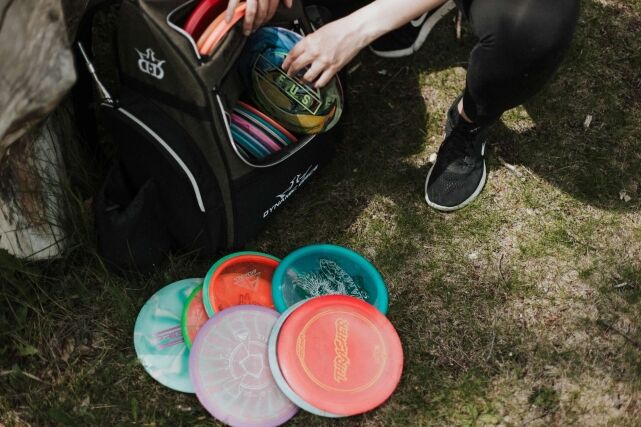Running a sporting goods store involves much more than simply displaying gear. You manage changing inventory, seasonal trends, and a diverse customer base. A POS system built for the sporting goods and outdoor sector brings together inventory tracking, payment processing, customer engagement tools and operational efficiency in one solution. In this article you will learn:
- How a POS system handles inventory by size, color and seasonal shifts
- Why real‑time stock updates, mobile checkout and integrated payments matter
- How CRM tools and automated reordering contribute to customer retention and increased sales
Core Features of a POS System for Sporting Goods
Inventory Management Tailored to Sport Retail
Sporting goods stores deal with complex inventory: products may vary by size, color, style, season and brand. A POS system designed for this environment offers precise tracking across all these dimensions. Real‑time stock updates help avoid out‑of‑stock or overstock situations. Industry sources cite that such systems reduce stockouts and overstock significantly. Vendor management workflows also support timely reordering and supplier coordination, helping ensure the most needed gear is in stock when demand peaks.
Integrated Payment Processing
A modern POS supports multiple payment methods and integrates them seamlessly into the sales and inventory flow. It allows mobile checkout, contactless payments and ensures that payment‑data automatically links back to inventory and customer records. With digital wallets growing rapidly as a share of transactions, sporting goods retailers benefit when their POS supports these options. Automated reconciliation of payments and inventory removes manual work and reduces errors, freeing staff to focus on service and sales.
CRM Tools & Customer Loyalty
POS systems with embedded CRM capabilities enable you to track each customer’s purchase history, preferences and size/brand affinities. This data can power loyalty programs, personalized offers and email campaigns that turn casual buyers into repeat customers. When CRM is integrated into POS, you gain both operational efficiency and stronger customer engagement.
Improving Operations, Productivity & Omnichannel Management
Faster Checkout and In‑Store Efficiency
Speed at the register matters, particularly during busy retail periods. Mobile POS devices allow staff to check out customers anywhere in the store, reducing lines and enhancing service. One report found checkout time reductions of up to 20 % with mobile POS in peak hours.
Unified Inventory and Omnichannel Sales
When you carry multiple store locations or sell online and in‑store, inventory synchronization is critical. A single POS system with real‑time updates across channels prevents overselling, supports “buy online, pick up in store” or ship‑from‑store models, and scales easily as you grow. The global market for sporting goods POS solutions is projected to grow significantly in the coming years as retailers adopt omnichannel capabilities.
Employee Productivity
Systems that automate repetitive tasks—such as stock counting, reorder alerts, sales tracking and returns handling—let your staff spend more time with customers, advising on gear, upselling, and building loyalty. Studies show productivity improvements of up to 30 % when such tools are adopted.
Best Practices for Sporting Goods Retailers
Assess Store Needs
Start by reviewing your inventory complexity (sizes, colors, seasonal lines), sales channels (in‑store vs online), and any additional services you offer: equipment rentals, custom fittings, or repair services. These factors help determine your POS requirements.
Train Staff and Adapt Workflows
Ensure your team understands how the system works, especially key functions like inventory lookup, mobile checkout and customer loyalty tracking. Simulate real‑world scenarios—returns of seasonal gear, stock transfers between stores, or mobile checkout at events—to make staff comfortable with the workflow.
Monitor Performance and Scale Over Time
Track key metrics: inventory turnover, average transaction value, number of loyalty engagements, and staff productivity. Use these insights to refine your assortment, adjust staffing during peak periods, and optimize promotions. As your store expands into multiple locations or expands online, ensure your POS system is ready to handle increased volume and complexity.
Sporting Goods POS FAQs
Q: How does a sporting goods POS system help manage inventory during seasonal shifts?
A: A tailored POS system offers real‑time tracking by SKU, alerts when stock falls below thresholds and predictive reporting based on past seasonal patterns. This helps retailers avoid costly stockouts or excess inventory.
Q: How does integrating payment processing with inventory management benefit sporting goods retailers?
A: When payment processing is integrated with inventory management the moment a sale is made the system updates stock and customer records. This reduces manual reconciliations, prevents inventory errors and gives you up‑to‑date visibility on what’s selling—and what is not.
Q: How can CRM integration in a POS system improve customer loyalty in sporting goods retail?
A: By capturing purchase history, preferences and sizing data your POS system can support targeted offers and loyalty rewards. This personalization encourages repeat purchases and helps the retailer build lasting customer relationships.
